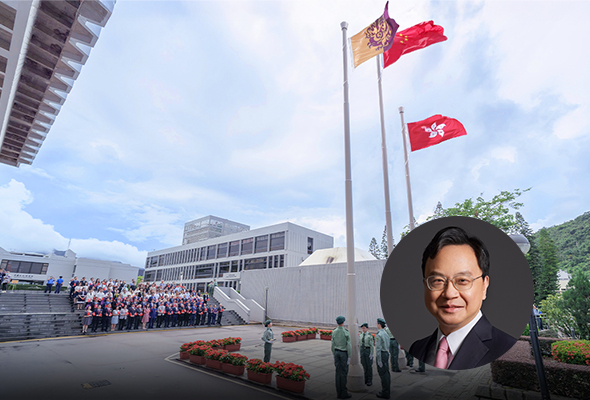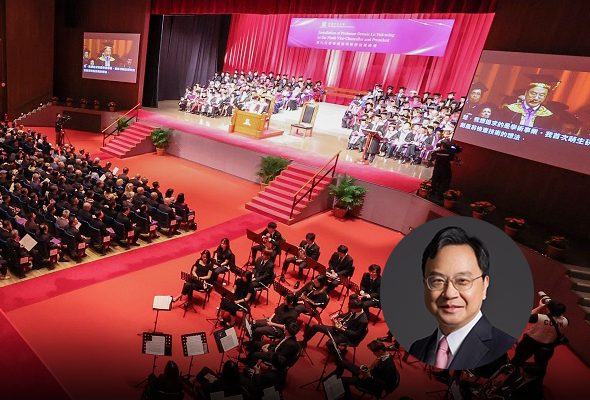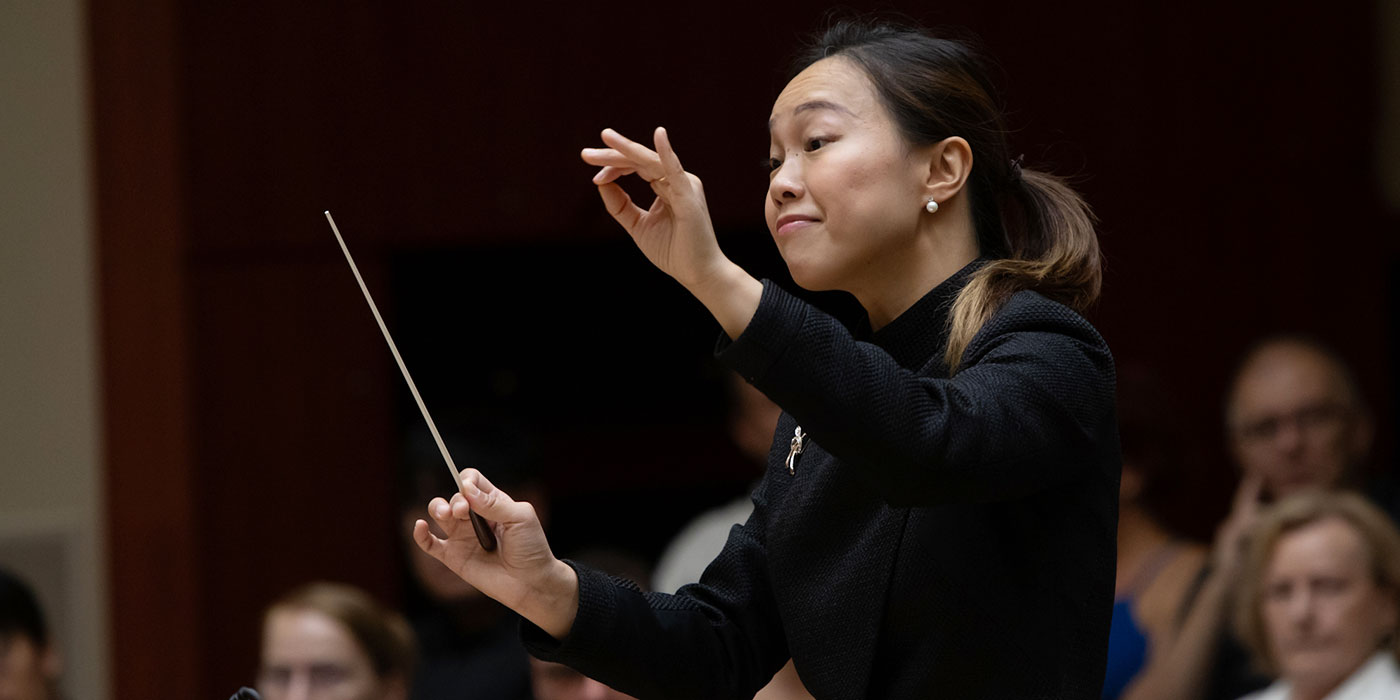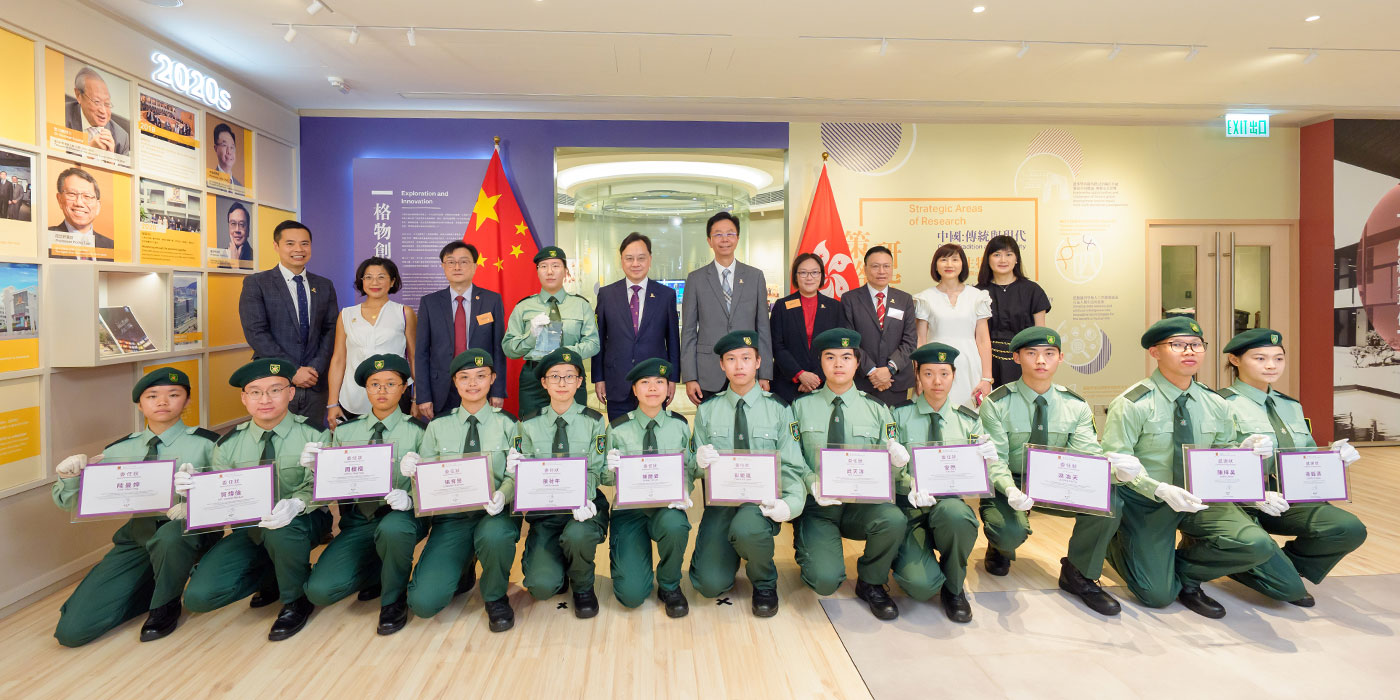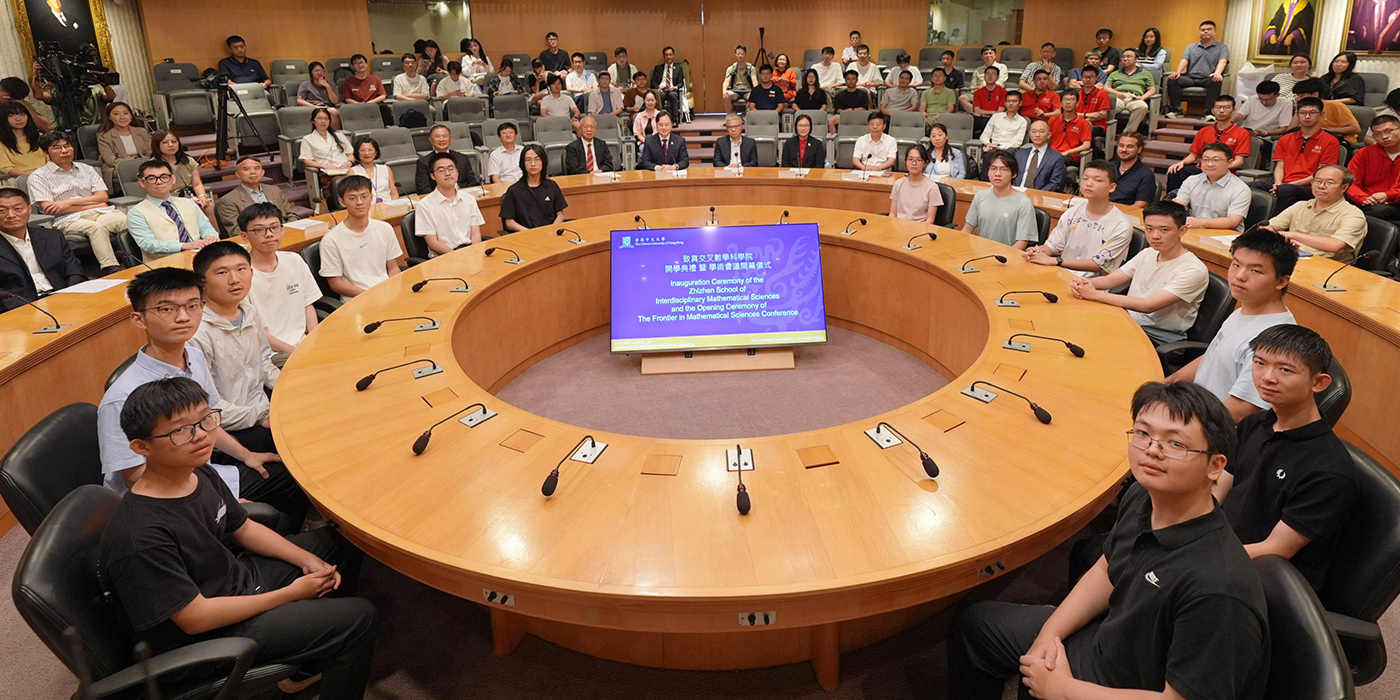Harvesting and projecting a kaleidoscope of scholarly research achievements
IRIS: A comprehensive new information platform illuminates research excellence and diversity at CUHK
Iris, goddess of the rainbow in ancient Greek mythology, lent her name to the area of ring-shaped membrane around the pupil that gives each person their unique eye colour. Now, the goddess has lent her name to a major new initiative at CUHK that showcases the profile and impact of CUHK’s diverse research community. CUHK in Focus talks to its lead creators.
CUHK has launched a one-stop online repository for CUHK’s multifaceted research endeavours. Called the Institutional Research Information System (IRIS), it is designed to collect, consolidate and project the vibrancy of CUHK academia, says lead creator Professor Sham Mai-har, CUHK’s Pro-Vice-Chancellor and Vice-President (Research). This comprehensive repository not only archives the University’s voluminous research output but also provides each scholar with a researcher profile, showcasing unique academic contributions. The platform will be available for internal use at CUHK this month and be open to public access later this year.
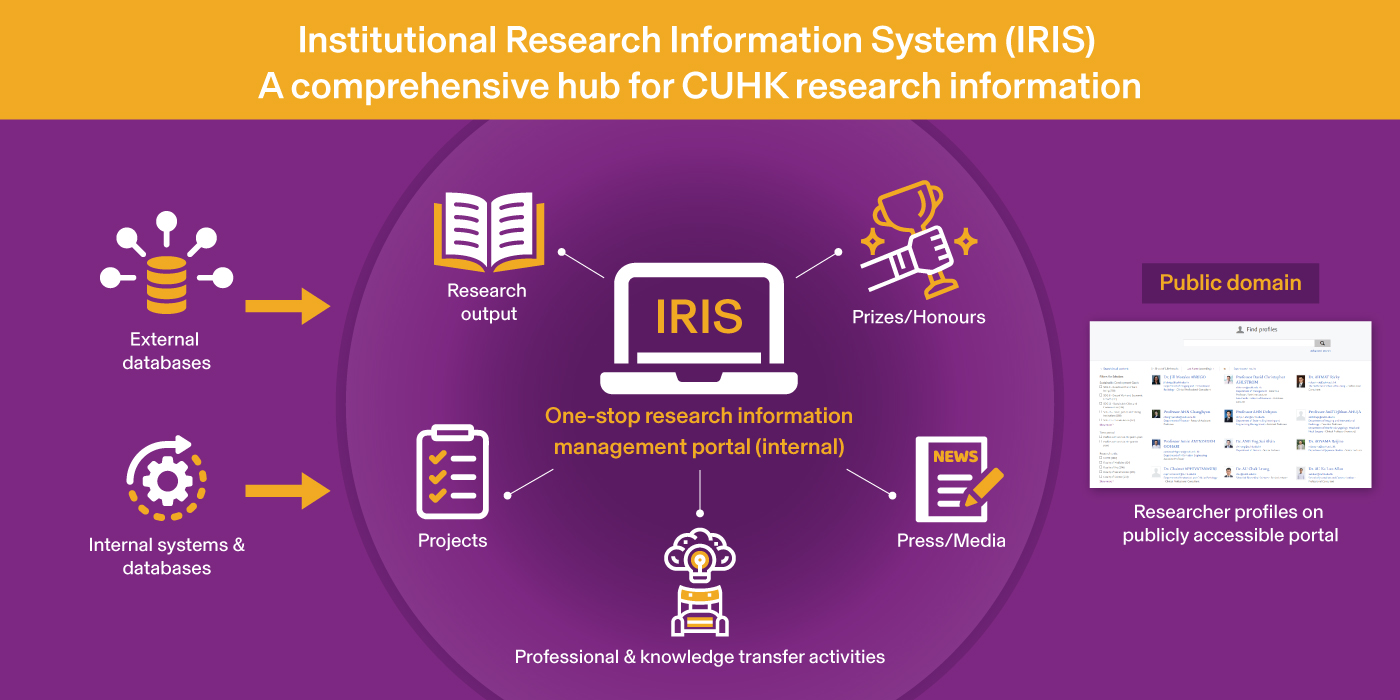
Auto-harvesting and collating of research excellence
The initiative is the outcome of two years of collaboration between the University Planning Office (UPO), the CUHK Library, the Office of Research and Knowledge Transfer Services, Information Technology Services Centre and the Human Resources Office.
Professor Jimmy Lee Ho-man, director of the UPO and project leader of IRIS, explains that the system integrates previously scattered research information into a single platform. It “harvests” CUHK research data from various trusted online databases which, after manual verification, are uploaded and stored on IRIS.

Showcasing the impact of 1,800 scholars
IRIS has now documented an impressive 45,000 professional and knowledge transfer activities, nearly 7,000 research projects, close to 36,000 research outputs and details of over 1,700 prizes and honours awarded to CUHK researchers and scholars in the past five years (2020-2024).
CUHK has forged collaborative relationships with over 13,000 research partners across more than 180 countries and regions—yielding 10,000 additional collaboration records, a significant increase over those held by the University’s previous systems.
Professor Lee cites the figures to illustrate how IRIS enables the University to efficiently capture and store a broader range of research information through its new auto-harvesting function. This includes data on the number and distribution of global collaborations involved in different research projects as well as the types of joint research undertaken. Furthermore, the new system reduces the time and manpower required for updating.
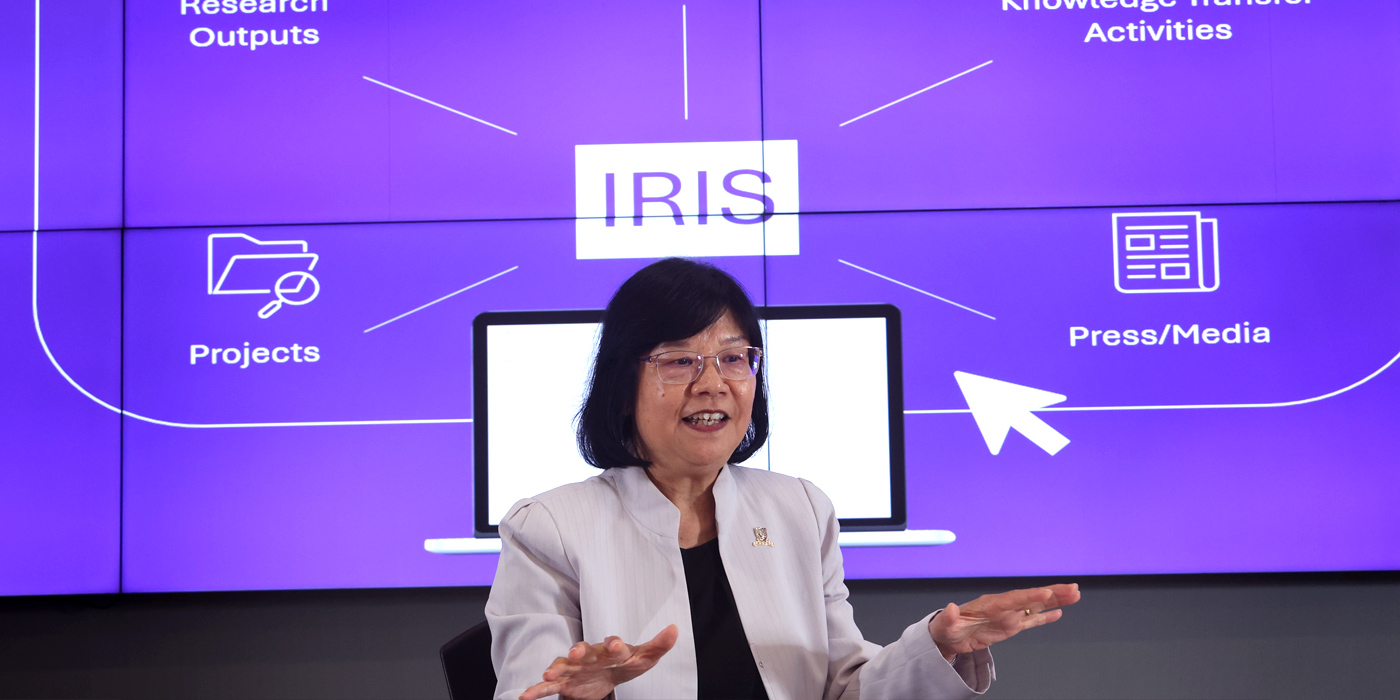
To be neither underestimated nor overlooked
Professor Sham outlines the three objectives for IRIS: to know CUHK’s research comprehensively, to use research information effectively, and to project the university’s contributions to society. The acronym IRIS, she explains, embodies the broad spectrum of CUHK scholarship and the vibrancy and interdisciplinarity nature of research at the University. “A cutting-edge institutional research information management system ensures that the contributions and impact of CUHK as a leading research-intensive and comprehensive university is neither underestimated nor overlooked.”
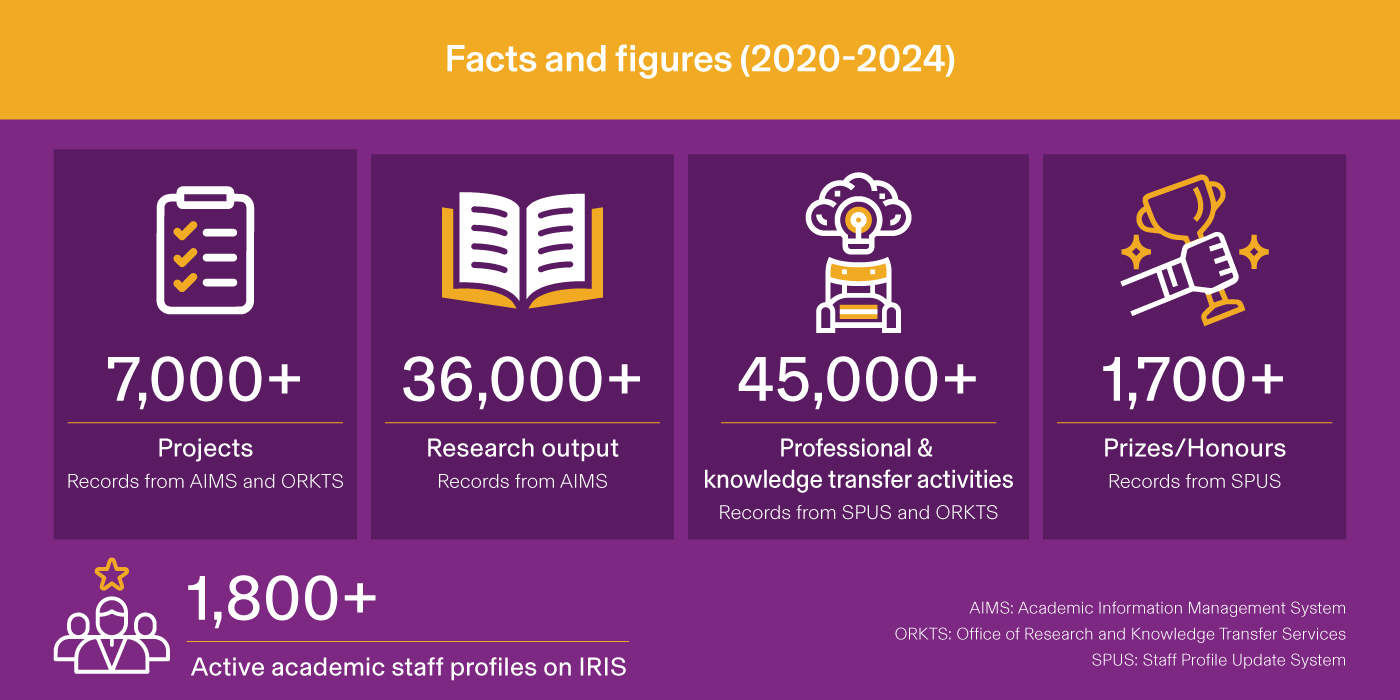
Professor Lee elaborates that the academic achievements of CUHK scholars are diverse and cannot be measured by a single indicator, such as the number of publications. This is reflected in the multi-layered information held under the design of IRIS, whose development entailed extensive consultation with scholars from different faculties, who provided invaluable insights for refining its design.
As a result, researcher profiles for approximately 1,800 CUHK academic staff members now feature not only their publications and conference presentations but also information on grants, patents, and their contribution to public policy and the United Nations Sustainable Development Goals.
Additionally, IRIS stands out for its capacity to highlight interdisciplinary collaboration. It links to the profiles of various collaborators, providing a clear and compelling sense of their research networks and collective impact.

Further on, Professor Lee envisions customised pages for various faculties and research centres, highlighting their growth and strengths. These “live” and accessible archives are intended not only to support strategic planning but also to alleviate administrative burdens. For instance, IRIS is set to minimise the time needed to spend annually to update manually the Staff Profile Update System.
“Information derives true value from its active utilisation,” Professor Sham emphasises. IRIS is more than just a database—it serves as a resource for fostering collaboration and as a strategic tool for advancing future initiatives, while also demonstrating the University’s contributions to society. She encourages CUHK scholars to update their research progress regularly and share feedback with the University to enhance the platform’s capacity to help ensure they receive recognition they deserve for their efforts to advance society.
By Jessica Chu
Photo by D. Lee




